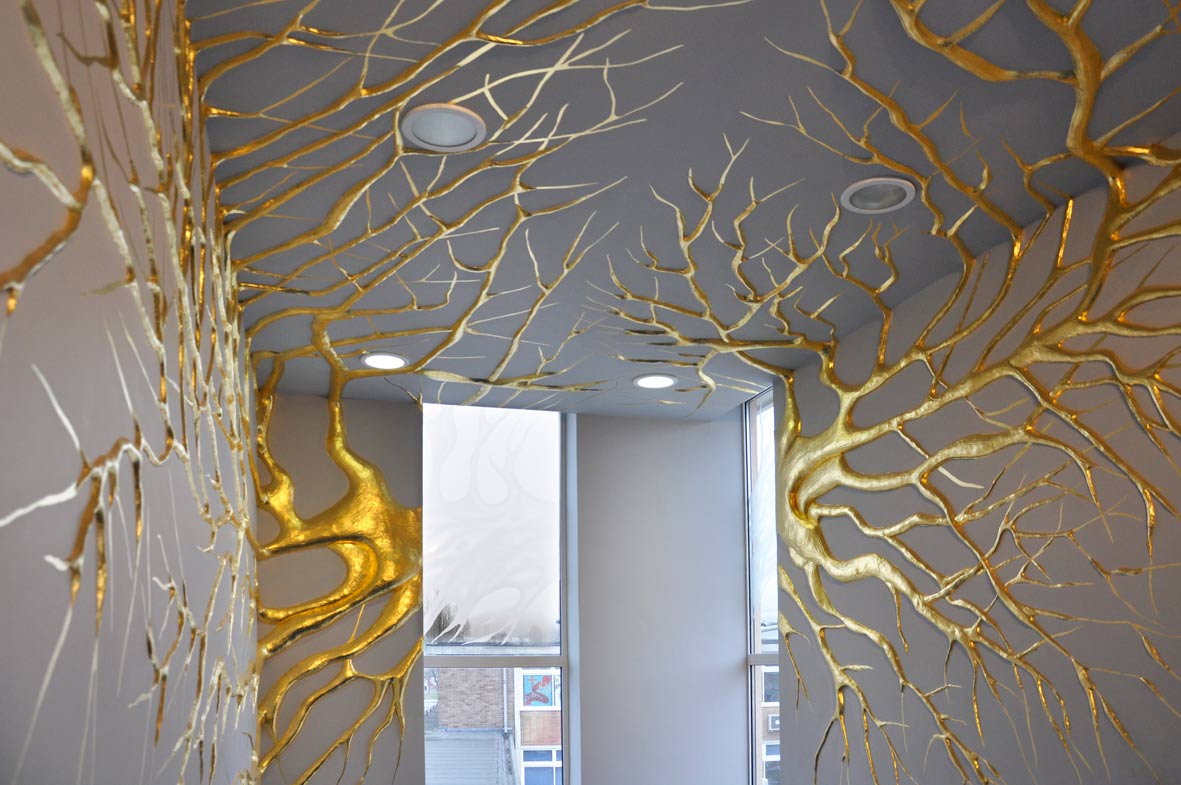Prompted by Trinity College’s Quiet Day, on Wednesday I visited an exhibition of Paul Hobbs’ work in St John’s Northgate, Gloucester (The Heart of Things is on until 21st November). Together, the exhibition and the pilgrimage afforded a stretching of perception into something more contemplative, even passive – which is actually a significant part of the Christian tradition, and part of the training of church leaders that goes on here.
The strongest of Paul’s pieces work along conceptual lines which play with different aspects of this passivity and activity. In a work such as Ten Words (2012), consisting of wooden blocks with various colours and printed news stories, the interaction encouraged from the viewer is of direct engagement and physical involvement. One can construct or deconstruct both shapes and language (including the words of the Ten Commandments), one is relationally complicit. However, the nature of a puzzle is also one that asks the viewer to remain if not physically distant, at least mentally distant, so as to frame the purpose of the activity. In this case, the puzzle frames the question of reconciliation between God’s words and the journalists’ words, while yet excluding the viewer’s words. I am both outside and inside this piece.
Similarly, The Gate (1995) as a sculpture of a slightly-too-small garden gate, has a conceptual outside and inside which relates not to the geographical space around it but to the invitation to a passive or an active response. There is literally no fence to sit on, and the point beautifully (if uncomfortably) captures the invitation from Jesus to “enter through the narrow gate” (Matthew 7:13), with all its sense of binary promise. Another striking piece, In Emergency Break Glass (1995), has a machete behind the glass frame we in the West associate with a cry for help or escape when in danger – our way out is here associated with the hand of violence and toxic fear (by way of reference to Rwandan and Kenyan conflict), which causes another uneasy relationship between passivity and activity.
Ultimately Paul’s work, as well as engaging mind and body in biblical or spiritual references (by way of allusive, creative suggestion in paintings, prints, collage and installation), has a deeper, more soulful engagement that’s something like grounding. It’s striking that the four central pieces in this exhibition (Ten Words, The Gate, Holy Ground and Attitudes) all bring attention to their place on the floor. It’s as if groundedness is the only possible starting point and ending point for the work – which turns out to be a great place for a quiet day.
Header image: Gate and (background) Ten Words, by Paul Hobbs. Photograph by Sheona Beaumont.



